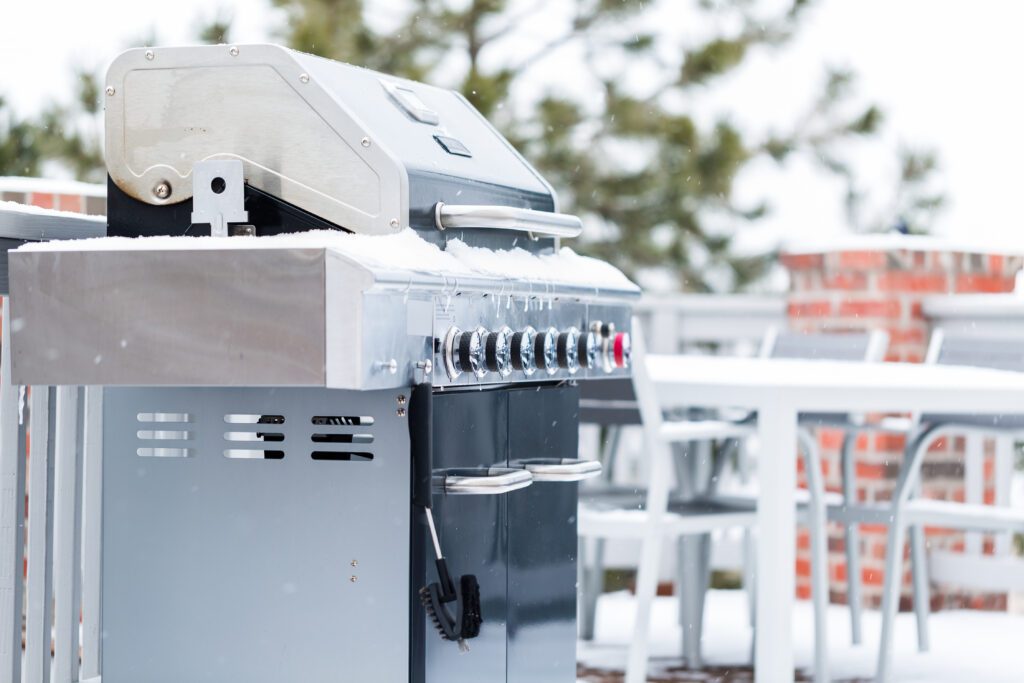How to Store a Gas Grill Year-Round: Seasonal Tips for Care & Longevity
The Ultimate Guide to Storing Your Gas Grill for Longevity
Gas grills bring a wonderful mix of convenience and flavor to outdoor cooking, making them a favorite choice for spring and summer gatherings. But whether you’re grilling every weekend or taking a seasonal break, knowing how to care for and store your grill properly will keep it in excellent condition for years to come. The best way to extend your grill’s life is to follow a few simple steps during both active and off-seasons — and when it’s time to store it long-term, a climate-controlled storage unit offers the ultimate protection.
Why Year-Round Grill Storage Matters
Whether you’re firing it up regularly or only using it on special occasions, your grill is exposed to the elements all year long. From rain and humidity to dust and pollen, outdoor conditions can wear down your grill’s surfaces and internal components. Practicing consistent care and smart storage techniques throughout the year not only preserves your grill’s appearance but also ensures safe and efficient performance.
Spring & Summer Grill Storage Tips
Grilling season is in full swing, but even now, your grill needs a little TLC between uses. Here are a few tips to keep it looking and working like new all season long:
- Cover It Daily: Use a weatherproof, breathable cover to shield your grill from rain, sun, and dirt when not in use.
- Clean as You Go: Wipe down the outside and brush off the grates after each use. It’s easier than doing one big clean later.
- Shelter It: If you can, keep your grill under a covered patio or awning to minimize UV and water exposure.
- Store Tools Nearby: Keep your grilling utensils in a weather-resistant storage bin or cabinet so they stay clean and accessible.
- Inspect for Pests: Wasps, spiders, and other bugs can make a home in your grill’s interior. Check for signs of activity before each use.
Why Proper Storage Matters
Gas grills are an investment, and proper storage protects that investment. Outdoor storage exposes grills to fluctuating temperatures, moisture, and humidity, all of which can cause rust and other damage. Even covered outdoor grills are susceptible to these issues over time. Studies show that grills left outside experience a significantly reduced lifespan—often only lasting five to seven years instead of 10 to 15. Investing in proper storage not only preserves the grill’s functionality but also maintains its appearance and resale value.
A climate-controlled storage unit is an ideal choice for your grill, keeping it safe from weather damage and environmental factors that can deteriorate its quality. Here, your grill will be protected from moisture, extreme temperatures, and pests, ensuring it’s ready to fire up when grilling season returns.
Steps for Preparing Your Grill for Storage
If it’s the off-season, or if you don’t grill often during the summer months, storing your grill properly is still important. Long-term or even short-term storage without preparation can lead to rust, grime, and other damage. To make sure your grill is always ready to use, here are the essential steps for safe, smart storage:
1. Remove the Propane Tank
The first, and most important, step in storing a gas grill is removing the propane tank. Propane tanks are highly flammable, and storing them inside is unsafe. Start by turning off the gas valve completely. After that, disconnect the tank by turning the coupling nut counterclockwise.
When it comes to propane tank storage, remember these key points:
- Find a safe storage location: Outdoor propane storage cages or lockers are designed to keep tanks secure and safe from potential fire hazards.
- Avoid confined spaces: Don’t keep the propane tank in a shed or garage, as propane is flammable and emits fumes that can build up in enclosed spaces.
- Store upright: Always keep the propane tank upright to prevent gas leaks.
Removing the propane tank is non-negotiable, as most storage facilities prohibit them. If possible, you can also consider loaning it to a friend or family member who can store it outdoors.
2. Clean the Grill Thoroughly
A deep clean is essential to keep your grill in the best condition. Here’s how to do it:
Start with the exterior of the grill, using warm, soapy water and a soft cloth to scrub it down. Be cautious with abrasive cleaners or scouring pads, especially if your grill has a stainless-steel finish, as these can scratch or discolor the surface. Rinse with clean water and dry thoroughly with a microfiber cloth.
For the grill grates and interior, turn on the grill and let it heat for about 10–15 minutes to loosen any food particles, then use a grill brush to scrub the grates. For tough residue, try a pumice stone or grill stone. Remove the grates and soak them in warm, soapy water for 15 minutes. Stainless steel grills can benefit from a grill-specific cleaner or a mixture of water and vinegar for a thorough, safe clean.
The drip pans and grease tray are also critical to clean. Empty the grease tray and soak the drip pans in hot, soapy water to remove grease or residue. For stubborn grease spots, baking soda and a damp sponge work well.
Make sure all parts of the grill are completely dry to avoid rust, mold, or mildew when stored. Avoid using paper towels on the grill’s exterior, as they can scratch the finish.
3. Secure the Grill Lid
Once the grill is clean, secure the lid to prevent accidental opening during transport or storage. Some grills come with built-in latches, but if yours doesn’t, you can use packing tape or bungee cords to secure it firmly.
If your grill has other moving parts, like shelves or wheels, be sure to secure these as well to prevent any shifting or damage while in transit. For larger grills, consider using bungee cords for added security, especially for parts like side burners or extra shelves.
4. Use a Waterproof Grill Cover
A grill cover is a great investment, providing an added layer of protection against dust and moisture.
Look for a weatherproof cover that is durable and fits snugly over your grill. Be sure to measure your grill to ensure the cover is neither too loose nor too tight, as ill-fitting covers can trap moisture. Avoid using tarps, which often have rough textures that can scratch your grill and don’t offer the same level of protection.
Once the cover is on, secure it with fasteners at the base to prevent it from slipping or moving during transit. A cover will keep the grill’s exterior clean and free from dust or debris in storage, reducing the need for cleaning when it’s time to bring the grill out again.
Storing Your Grill in a Climate-Controlled Storage Unit
When it’s time to move your grill to storage, a climate-controlled unit is your best option. These units provide consistent temperature and humidity control, essential for preventing rust, corrosion, and mold.
Climate-controlled storage units keep a steady temperature and humidity level year-round, making them perfect for storing items like grills that can be damaged by fluctuations.
Here’s how this type of storage can protect your grill:
- Temperature Consistency: Temperature fluctuations can cause metal parts to expand and contract, leading to cracks or warping over time.
- Humidity Control: High humidity can lead to rust and corrosion, especially in grills made of steel or other metals.
To make the most of your space and keep your grill safe, try these tips for organizing your unit:
- Leave Space Around the Grill: Give your grill some breathing room to avoid scratches or damage from other items. Place it in a spot where it won’t be bumped or jostled.
- Store Upright: Always keep the grill upright to prevent any leftover oil or grease from spilling and to ensure stability.
- Store Accessories Together: Keep grilling accessories, such as brushes and utensils, in a nearby container or organizer so they’re easy to find next season.
With a climate-controlled storage unit, you’ll have peace of mind knowing that your grill is protected from environmental risks and will be in great condition when you’re ready to use it again.
Long-Term Maintenance Tips
Once your grill is stored, a few maintenance steps can help ensure it stays in top shape, especially if it will be stored for several months.
If you have access to the storage unit, consider checking on the grill every few months. This way, you can ensure that the cover is still in place, the unit is dry, and there are no signs of pests. When it’s time to bring the grill out of storage, give it a quick safety inspection. Check the gas hoses for any cracks or brittleness, clean and re-season the grates, and ensure the ignition system is working properly.
Regular maintenance, even while in storage, will extend the life of your grill and keep it working efficiently for future cookouts.
Storage Success Starts with the Right Space
Taking a few extra steps to store your gas grill properly ensures that it will last for years to come. Whether you’re using your grill all summer long or storing it for the winter, these tips will keep it protected and ready for action. From deep cleaning and daily care to climate-controlled storage, a little effort goes a long way in protecting your investment.
For more storage tips and guides on how to store other household items, sign up for our monthly blog newsletter, where we offer insights and practical tips on protecting your valuables.






